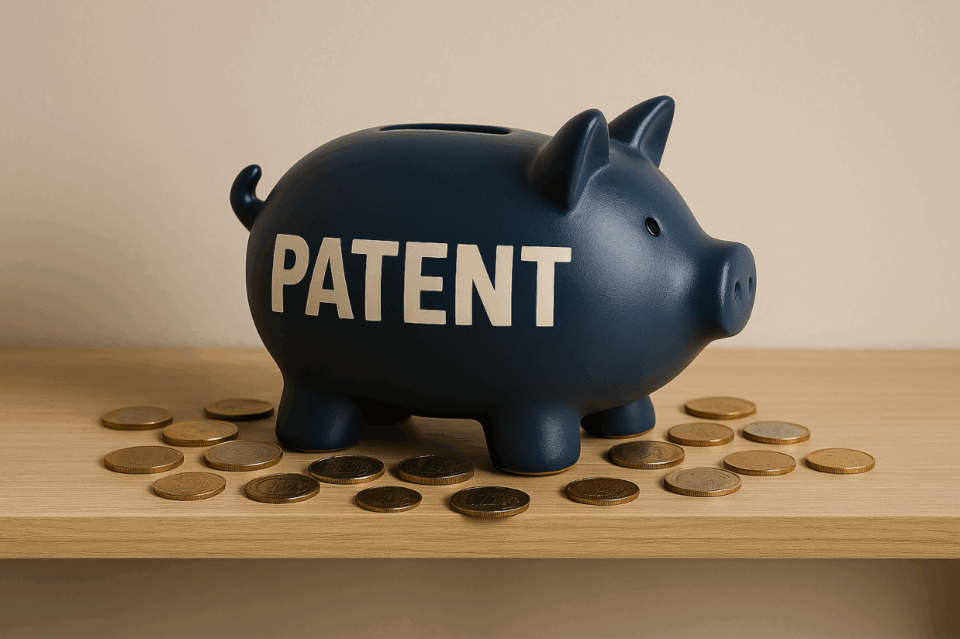So You Want to Keep That Patent? Well, It Just May Cost You — a Lot

U.S. patents are currently subject to maintenance fees paid to the U.S. Patent and Trademark Office (USPTO) at 3.5, 7.5, and 11.5 years from the date of grant to keep the patent live. The maintenance fees escalate over the life of the patent, but the fees are reduced for small entities and micro-entities (as those terms are defined in the patent rules).
For example, maintenance fees are currently $2,150, $4,040, and $8,280 at 3.5, 7.5, and 11.5 years, respectively. The fees are reduced by 60% for so-called small entities, and by 80% for so-called micro-entities.
If a maintenance fee is not paid, the patent expires and the patented invention enters the public domain.
It recently has been reported that the U.S. Commerce Department (which oversees the USPTO) is considering charging patent owners a different or additional fee to keep a patent live. The fee is reported to be in the range of 1% to 5% of the “value” of the patent, and would seem to be targeting high-value patents. It is possible that this fee may be levied on top of the current patent maintenance fee regime.
In our opinion, the proposed value fee (or should it be called a “tax”?) poses significant problems and many unanswered questions.
First, how is the value of a patent determined? Is it based on one of the traditional patent valuation approaches, such as an income approach, a market approach, or a cost approach? If it is based on an income approach, will it be based on the sales of products that are covered by the patent? If so, what about products that are covered by many patents, such as smart phones, computers, and tablets? How would the value of one of those patents be determined relative to the value of other patents?
What about pharmaceuticals that may require years to receive necessary approvals (e.g., FDA approvals) before they can be marketed? Will these patents be valued based on speculative revenues?
Perhaps value could be based on an algorithm? Many patent search platforms provide an estimated value for patents. However, what criteria do those algorithms use, and can such valuations be applied fairly to patent owners across the board for all patents in all technology areas? For example, do such algorithms take into account how frequently a patent is cited as prior art by other patents, or how many counterpart foreign patents exist?
The estimated values of patents based on these algorithms can vary widely and often do not or cannot take into account the realities of the marketplace.
For patents owned by public companies, publicly available filings, SEC disclosures, and general commercial activity potentially could be used to determine a patent’s value. But that, too, is likely to be speculative and, of course, would exclude data for patents owned by thousands of privately held and non-U.S. companies.
And what about prior licensing revenue or litigation, arbitration, or mediation awards and damages? Would such information be considered when determining a patent’s value?
Clearly, questions abound.
Another consideration is what such a value fee would do to incentivize or potentially disincentivize patents and innovation. When the cost to maintain a patent is certain and built into the research and development costs of a new product, the financial decision to move forward with patent protection is more easily made. With unknown patent carrying costs down the road, that certainty goes away. Would the proposed fee disincentivize patents? Perhaps. Would it disincentivize innovation? Quite possibly.
And, finally, where would the revenue generated by the value fee go? The USPTO is one of a handful of U.S. government agencies that is self-funded. There are no general revenue funds used to fund USPTO operations; user fees fund operations. Would the value fee revenue go to fund USPTO operations, or would it go into the U.S. Treasury’s general revenue?
The idea of a patent value fee would be a fundamental shift in the mission and policy of the USPTO, which always has been to create a system to incentivize and reward innovation and development. Would such a fee further that mission and policy? We have our doubts.
We will continue to follow any developments about the possible patent value fee.
Looking for helping planning for the future of your IP? Contact Mitchell Weinstein or another member of LP’s IP group.
Filed under: Intellectual Property
Related insights
June 11, 2025